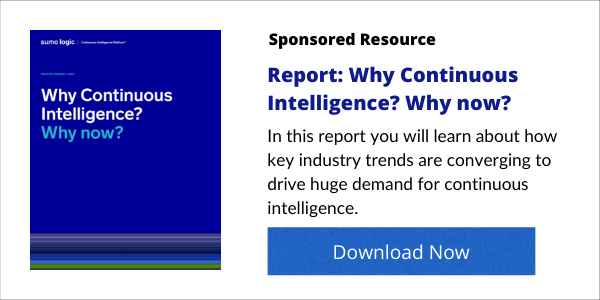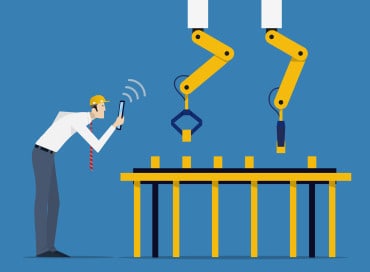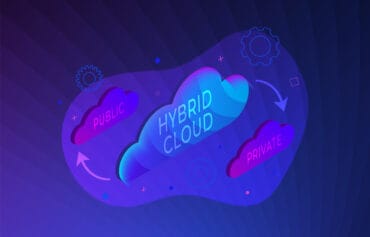
IT operations in the enterprise is among the areas where continuous intelligences can provide near-term benefits.
The model for 21st century business is changing fast. It seems that every task completed by an employee and every customer experience is enabled and captured by the information systems that form the core of IT operations. How the IT operations team manages and interacts with those systems is changing as fast as the business model itself.
Not only is almost everything digitized in some way, but users and customers demand that systems be available 24×7 from anywhere and any device. To meet those expectations IT operations still must address outages. Yet, they must anticipate and prevent outages and performance bottlenecks well before they happen. Plus, new applications and updates may be entering the IT environment several times a day, adding to the complexity.
That’s where artificial intelligence and real-time data collection and processing may be able to step in as AIOps and continuous intelligence. They provide a view into complex enterprise systems that no human can see with their own eyes.
Download Infographic Now: The 5 intelligence gaps curbing your climb to digital successIntroducing continuous intelligence
One option that enterprises are considering is continuous intelligence. It’s a technology concept that collects data such as system metrics in real time from a range of enterprise systems. It then analyzes that fresh data – along with historical data – for usage trends, performance, and potential issues, whether hardware, software, or network-based. The CI system leverages AI and machine learning to analyze new and past data. It also draws on a knowledge base built by human operations staff. Such knowledge helps CI understand what is considered normal system behavior and proven problem fixes.
When the system detects an aberration it can issue an alert to the operations staff, or in some cases, implement a pre-programmed fix.
CI holds potential for benefits in a broad range of sectors, such as application development and modernization, business intelligence, and healthcare. But CI for IT operations and security operations by extension offers a key opportunity for improvement in those areas. In fact, it is IT Ops that supports those other business sectors.
CI for Ops is closely tied to AIOps, which already forms a basis for using AI to manage and monitor IT systems. CI monitors data from operations logs and performance metrics collected by AIOps tools. AIOps, still in the adoption and evaluation stages for some companies, helps human operators sift through and act on thousands of system and security alerts.
See Also: Continuous Intelligence Insights
Benefits to IT operations
CI adoption isn’t about replacing humans in an operations center. Rather, it’s intended as a tool to help humans do their jobs better. IT offloads some of the mundane tasks tied to alerts while keeping systems operating reliably and efficiently. Executed well, CI, paired with AIOps, should help human staff focus on innovative tasks, such as rolling out new systems rather than wrestling with hundreds of false positives from systems monitoring tools.
What CI offers is the ability to learn about system behaviors over time. In some cases, it can self-identify relationships and dependencies among systems and applications that humans may not recognize. That discovery of inter-system relationships may ensure that multiple apps and databases are treated in a holistic manner.

How important is CI for Ops?
IT’s clients – the employee users and enterprise customers – have evolved in their needs and expectations when it comes to IT. DevOps.com reports that 85% of users say that digital applications are “absolutely essential to their daily lives”. That article cited the fact that 2020 – You remember 2020, the year of work-from-home – was the first time where corporate spending on cloud services “dwarfed” spending on physical data centers.
Managing the cloud, particularly multi-cloud environments, continues to evolve. More IT Ops personnel may be monitoring multiple cloud services and not data center servers and storage configurations. CI can become a crucial tool for those professionals.
Software vendors and industry experts are promoting the adoption of continuous intelligence. However, at this time CI may not be ready for all aspects of all companies’ IT infrastructures and applications. At least it’s not in a single all-encompassing way.
Most vendor CI offerings tend to be focused on specific needs and applications. For example, they may focus on IT Ops, security, business intelligence, or DevOps. It’s typically not sold as a single management tool for all aspects of a computing portfolio. For example, a vendor who sells a CI platform may integrate that tool with another vendor’s security software.
As AIOps goes…
CI for IT Ops also is optimized for use with AIOps in managing cloud environments. It provides real-time insight into cloud services and management of cloud-enabled applications. While cloud spending does “dwarf” on-premise data center spending, legacy applications that users cling to may not fit under AIOps packages. In addition, some cloud services, such as some SaaS applications, may not be optimized for AIOps.
So, there may be some gaps in what CI can view and run analytics against. However, enterprise leaders may wish to consider that AI has been evolving over time. Actually, the term AIOps wasn’t coined by Gartner until just four years ago. So, AIOps and its companion CI should still be maturing over the next few years.







